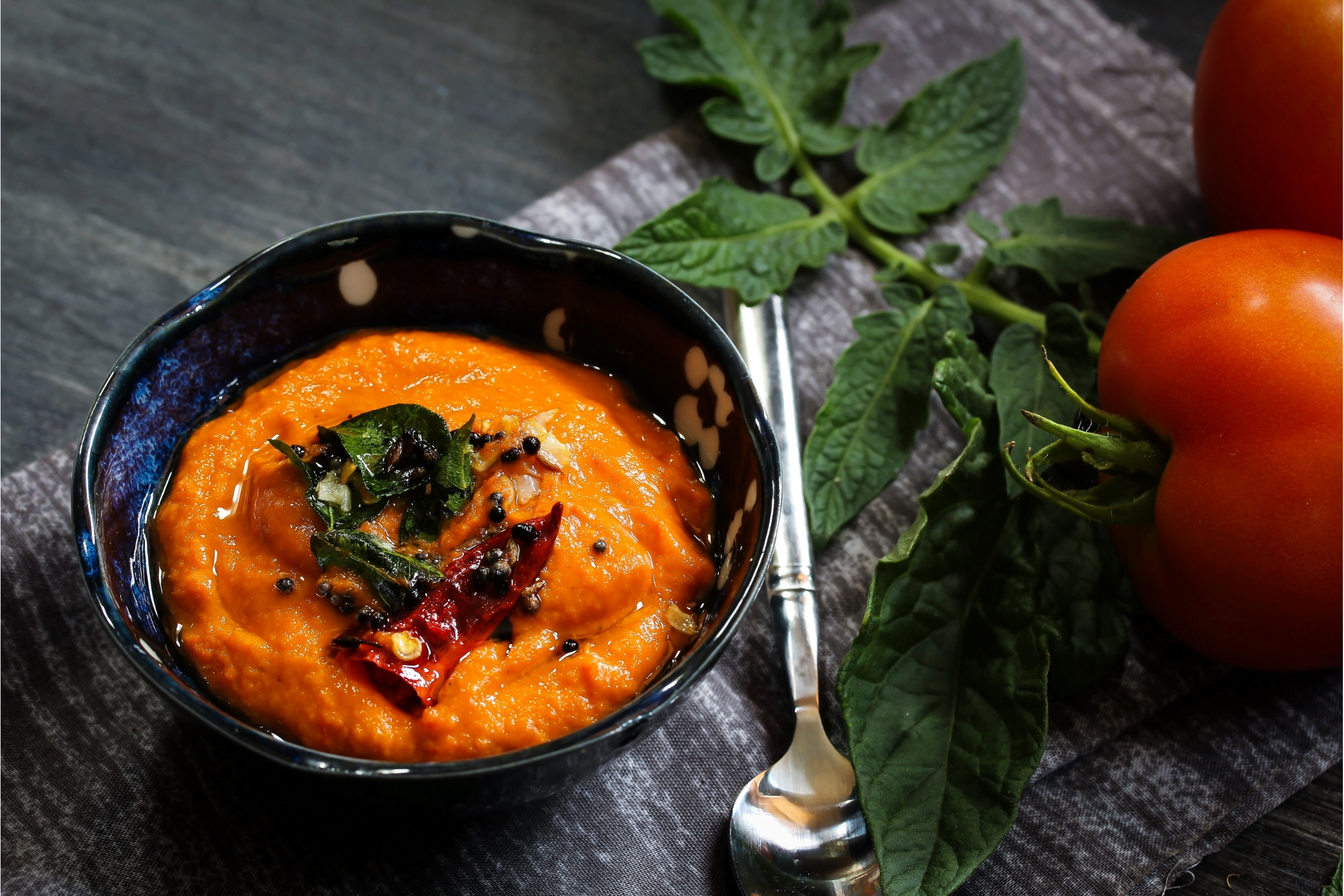Introduction
Welcome to the world of irresistible condiments and flavorsome delights. Today, we’re diving into the delicious universe of Tomato Chutney, a versatile and beloved accompaniment in Indian cuisine. In this comprehensive guide, we’ll unveil the secrets of creating Tomato Chutney in your kitchen. From its tangy tomato base to the aromatic spices, we’ll show you how to craft this condiment that can elevate any meal into a culinary sensation.
Why Tomato Chutney?
Before making chutney, let’s explore why this condiment is a staple in Indian households. Chutney is a symphony of flavors, combining the natural sweetness of ripe tomatoes with a medley of spices and seasonings.
This chutney isn’t just about taste; it’s about the joy it brings to your palate. It can be a zesty spread for sandwiches, a zingy dip for snacks, or a delightful accompaniment to Indian main dishes like dosa, idli, and rice. The beauty of chutney lies in its ability to complement a wide range of dishes and enhance their flavors.
What Sets Our Recipe Apart?
You might wonder, “Why bother making chutney at home when it’s readily available in stores?” The answer is simple: homemade chutney allows you to control the ingredients, adjust the spice level, and savor the freshness of a homemade condiment.
Our user-friendly chutney recipe ensures that you can replicate the authentic taste and experience of this beloved Indian accompaniment effortlessly. We’ll provide step-by-step instructions, valuable tips, and insights to guarantee your chutney is bursting with flavor.
Join Us in the Kitchen
Throughout this guide, we’ll walk you through the process, making it accessible to both seasoned cooks and beginners in Indian cuisine. So, gather your ingredients, grab your apron, and embark on a culinary adventure transporting you to the heart of Indian flavors. Let’s create a batch of chutney that’s not just a condiment; it’s a celebration of tradition, a burst of tangy goodness, and a culinary masterpiece that will leave you craving more.









